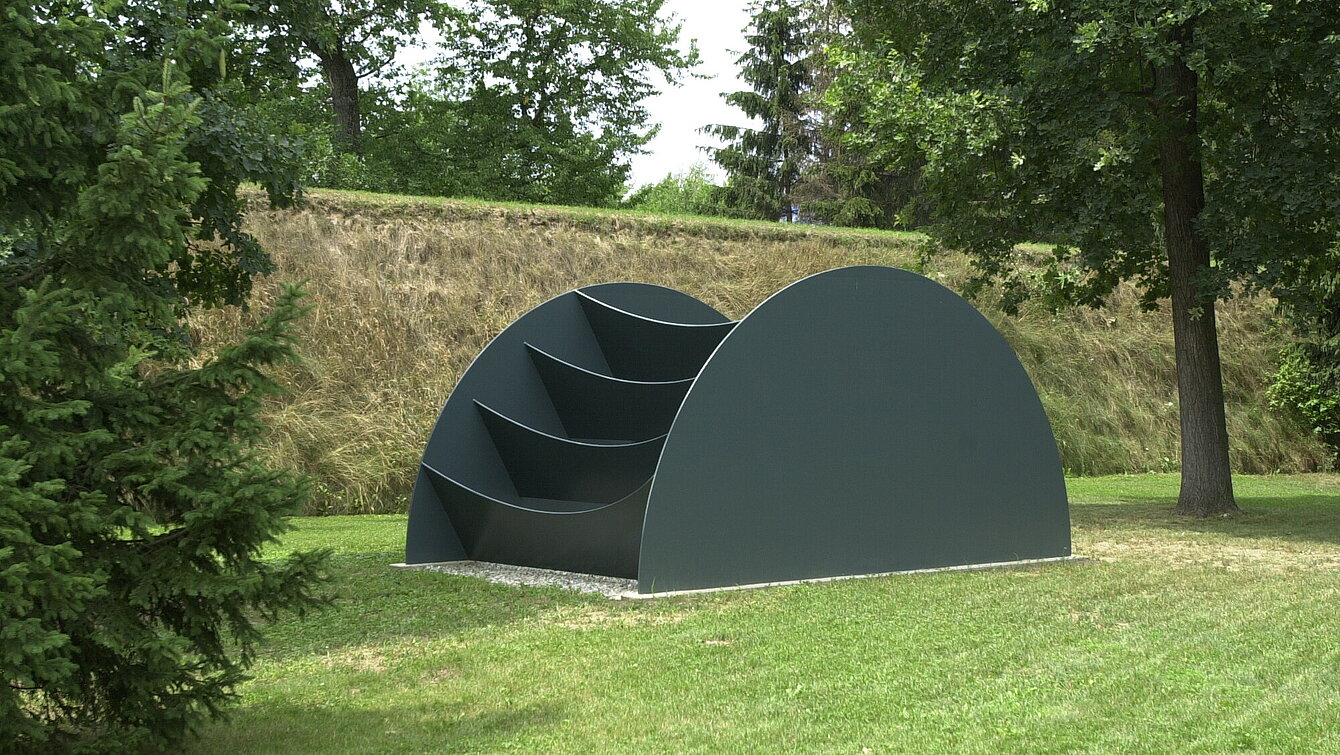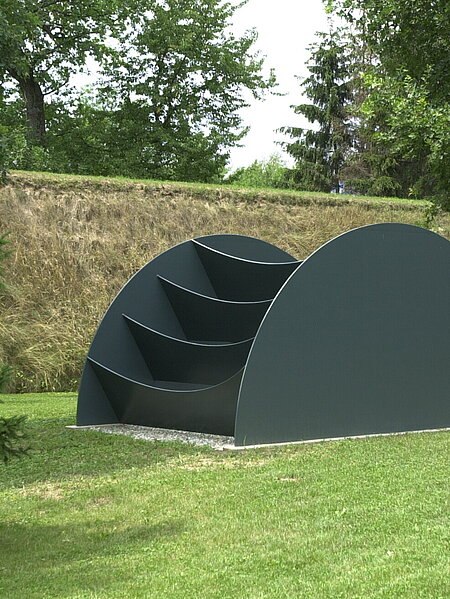This large, semi-circular sculpture looks like a paddle wheel that has pockets or compartments with a slightly dipping edge. Leonardo da Vinci used a similar concept in a design for a dredger, which is illustrated in one of his drawings in the Codex Atlanticus collection. Like an awkward ladder, the hurdles of Körperteil-Hürden become an obstacle and an ‘object’ in the sense of the Latin word, obiectum—whose literal meaning is ‘thrown against’. The compactness of the work is particularly emphasised by its colour and material.
Körperteil-Hürden [Body part hurdles]
Richard Fleissner, 1994


Image Credits
Author
Elisabeth von Samsonow
Author
Position 30
Owner
Artothek des Bundes
Artist biography
Richard Fleissner
Show all
About the sculpture
Fleissner’s work “Körperteil-Hürden“ appears as a large, semi-circular figure that looks like one half of a paddle wheel. A drawing by Leonardo da Vinci in the Codex Atlanticus depicts a similar technological concept in the form of a dredger.
Pockets or shelves with a slightly sagging bottom are mounted on a sort of wheel. The construction strikes the viewer as a particularly uncomfortable ladder that must be surmounted. Independent of how we choose to interpret the sculpture – it is composed on the basis of a simple aesthetic formal principle that makes it appear compact and emphasises the effect of its site and material.
The geometry of the circular segment and the monumentality of the object in particular make it a figure that dominates the site like a dinosaur. The reference to the human body derives from the object status of the sculpture itself, or, more precisely, from the interpretation of the object as something that plants itself in front of us like a hurdle, that opposes us, throws itself against us – an object in the true sense of its Latin root ob-icere.


















